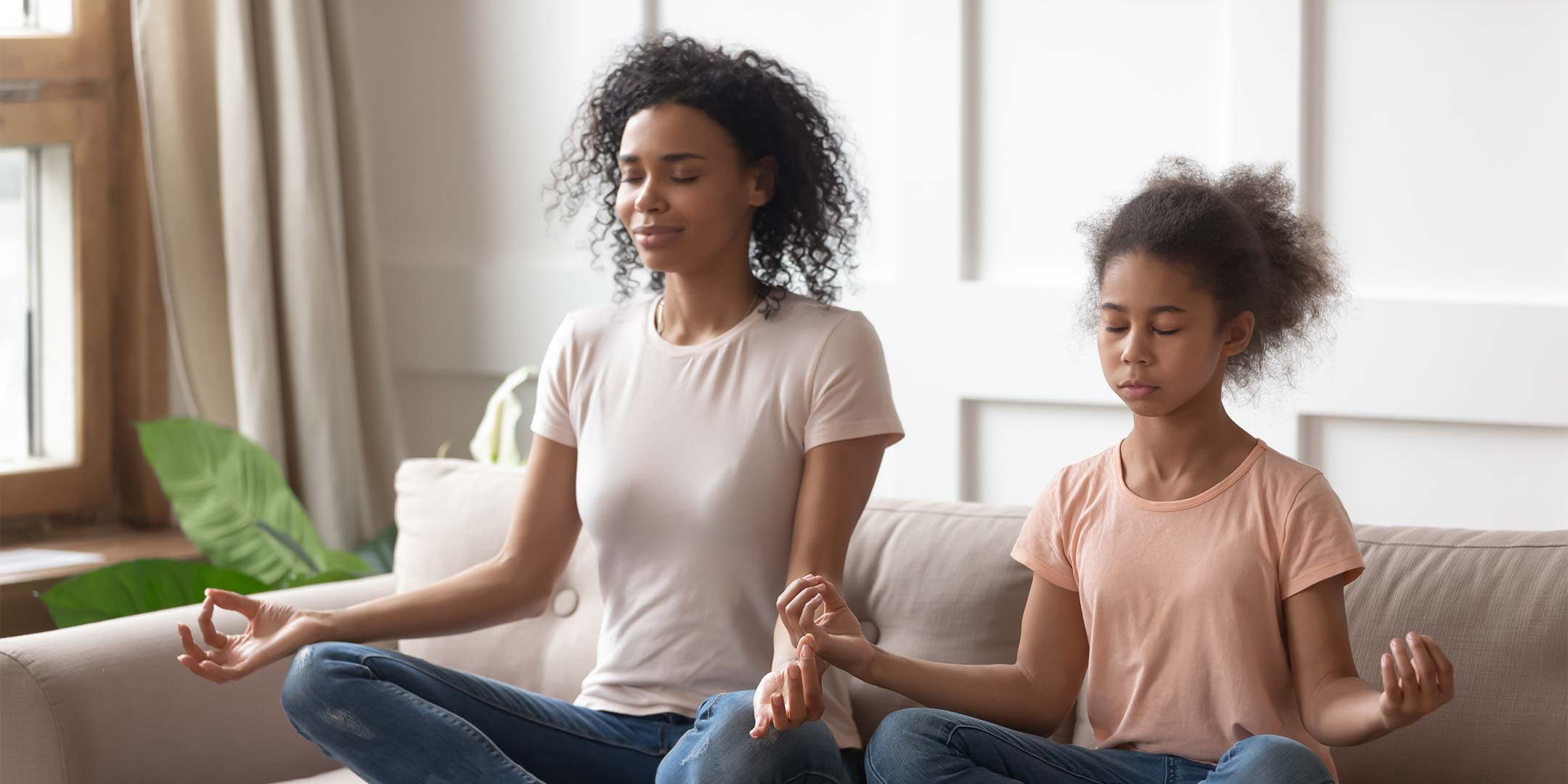“Safekeeper” is the term Conscious Discipline uses to describe the adult’s role in the home or school. Our primary job is to keep children physically and emotionally safe. The children’s job is to help keep themselves and each other safe. We are the Safekeepers and they are the helpers.
Most of us are doing great with the “physical safety” part by not running with scissors. It can be a bit more challenging to create emotional safety for children when we’re experiencing all the same social isolation, frustration, fear, anxiety and sadness they are… plus grownup concerns about a dwindling pantry, work, bills, loved ones in the “high risk” group and more.
The “emotional safety” part of being a Safekeeper in a crisis situation does not require us to squash our emotions, put on a happy face for the family and go about our business. It requires us to be conscious enough to manage our emotions in healthy ways so we can provide safety and a path of emotional regulation for children. It also requires us to be brave enough to mess up, pick ourselves up and try again. And again. And again.
Remember three things:
- Composure is your lifeline
- It’s okay to “oops”
- Feelings are your friends (or at least not your enemies)
Composure Is Your Lifeline
Children co-regulate with trusted adults, so an unregulated adult cannot regulate an unregulated child. In other words, if we freak out when they freak out, no one is calming down any time soon. Composure is our lifeline as Safekeepers. We can only provide emotional safety for children when we ourselves are emotionally safe.
An adult who is running on caffeine, five hours of sleep, a small hangover, and low or high blood sugar while multitasking 87 things (including a mental barrage of anxious “what ifs”) is not likely to provide emotional safety. Honor your basic needs. Sleep, eat well, avoid over-indulging and realize when you need to carve out a few moments for whatever feeds your calm.
Build mindfulness practices like deep belly breathing into daily life. Shallow breathing is an evolutionary response to stress— a leftover from the days when safety meant holding your breath to listen for a wild animal. Nowadays, most of our threats require higher-order thinking skills and emotional management that requires ample oxygen flow to the brain. So, let the air in!
The good news about deep breathing is that it requires no equipment and can be done lounging on the sofa, driving a car, restocking groceries, doing paperwork, changing the baby or pretty much anywhere else. Breathe in deeply through your nose and really get your stomach and diaphragm moving to pull the air down deep into your lungs. Then breathe out slowly through your mouth, letting your belly come back in. Try to make your exhale last twice as long as your inhale.
Start your morning with conscious, deep breathing and a few stretches instead of reaching for your phone, lying there worrying or launching out of bed in “go” mode. If you need to launch out of bed to tend to a young child, doing your belly breathing once you reach the child will start the morning off more calmly as you co-regulate together. Once you get going, take it a step further by enjoying a different Brain Smart Start with us every day on Facebook.
Set an alarm or designate routine times to pause for deep breathing throughout the day (at wake up, before meals, mid-morning, mid-afternoon). This will help increase your composure and oxygen flow even when you aren’t fully conscious of your stress level or shallow breathing. If possible, step outdoors for at least two of these deep breathing pauses.
Conscious Discipline offers many free resources for composure like photo and video examples of breathing techniques, printable breathing tools and the Brain Smart Start to help. Grab a family member and encourage them to breathe, too. The connection you share will add a beneficial boost to your composure practice.
It’s Okay to “Oops”
Despite our best efforts, we (and our children) are going to lose it, step on each other’s toes, yell, hide out and do other things that don’t feel like our best selves. “Oops” is a silly sounding way to apply a little grace to the situation. At the Conscious Discipline Summer Institute, we say, “Oops, you’re still beautiful,” to remind each other that our mistakes and missteps don’t define who we are; they’re part of learning and life. We are beautiful inside, regardless!
Let mistakes and missteps be oops you can let go of, learn from or bounce back from. Not every crayon mark or sassy remark requires a response. Not every idea in your head requires a town hall meeting. Not every new strategy you try is going to be a good fit for your family. Try these healthy responses to mistakes:
- Oops, I didn’t respond the way I wanted to. I’m going to try again.
- Oops, that didn’t happen in the most helpful way. Let’s roll it back and try it again.
- Oops, that didn’t work. I’ll try something else.
- Oops, I’m still beautiful.
- Oops, you’re still beautiful.
Without oops, it’s easy to slip into a negativity spiral that increases stress on ourselves and our relationships, and hinders our ability to be Safekeepers. Oops, on the other hand, creates an uplifting spiral: It’s a whole lot easier to regulate our emotions when we’re willing to see our missteps as oops rather than beating ourselves up. It’s also a whole lot easier to stay regulated when we’re willing to see another person’s actions as an oops rather than a personal affront.
We’re all going to mess up, make choices that don’t feel like our best selves and generally lose it from time to time… And so are our partners and kids! Let yourself off the hook and let them off the hook, too. Breathe, forgive, make amends, set limits on any hurtfulness that may have happened and then move forward. Accept that you’re doing the best you can during a really difficult time… and so is everybody else. The more oops (grace) we can offer ourselves and each other, the easier life will flow. It can be hard sometimes and you can handle it. It’s okay to oops!
Feelings Are Our Friends (or at Least Not Our Enemies)
Befriending our emotions isn’t the process most of us grew up with in terms of self-regulation. We’ve buried them, avoided them, ignored them, tried to “happy up,” hid from them through addiction, distracted from them with comedy, and attempted to eat, shop, exercise, work or talk them away.
Even if we don’t feel ready to befriend our emotions just yet, we can at least stop seeing them as enemies to quash. Start this process by noticing what you are feeling when you are feeling it. Tune into physical cues you may be experiencing like a knotted stomach, a tight throat, a hollow chest, a tight jaw or a pounding head. Look for behavioral cues like being triggered, short tempered, easily irritated, and all the “overs” (over-eating, over-exercising, over-working, etc.).
These bodily sensations and physical actions are trying to draw our attention to unattended feelings. Hit the pause button to breathe deeply and tune in to these feelings the best you can. If you do nothing more than notice that you’re feeling a big emotion and then pause to breathe, you will decrease the intensity of the emotion. Creating a pause between the bodily sensation and your reaction is the essence of emotional regulation.
During times of chronic stress, we can be like walking teakettles. The pressure increases relatively unnoticed until it builds to the point where the kettle starts sputtering, spewing and screeching. Notice the heat before you blow. When things start getting heated, this might mean stopping mid-sentence to say, “I need a minute to breathe,” and then leaving the room to breathe and reassure yourself, “Keep breathing. I’m safe. I can handle this.”
Notice your internal state in general. Are you feeling mostly composed or is the emotional pressure building? Is deep breathing going to release enough steam right now or do you need something more, like stepping outside, exercising, connecting with loved ones, reducing expectations, walking around the block (alone or with family), spending 20 minutes on a hobby, finding a way to contribute to the community, eliminating something that’s causing friction, taking a long shower or seeking out ways to connect with a friend who “gets” you?
Check in with yourself often and honestly, and adjust your day as needed. The dishes can wait. The lesson can wait. Your wellbeing cannot wait; it is the gatekeeper through which all those other things happen. You can spend the time noticing and responding to your internal emotional state through composure practices now, or you can spend the time later engaged in power struggles with family members, repairing damaged relationships and redoing work done poorly due to distraction.
Be gentle with yourself. It’s okay to scale back your goals from accomplishing this, cooking that, assisting with meaningful learning and cleaning out the junk drawer to simply “making it to bedtime with minimal meltdowns.” It’s also okay if checking everything off your to-do list helps you feel powerful (or if you stay in your jammies today and check off everything tomorrow). Giving yourself a hard time about hitting pause or doing something that helps you cope only serves to push you farther away from safety and composure. Consciously refocus on your job as a Safekeeper instead.
Once you’ve gotten into the practice of noticing your emotional cues and breathing into them, you can go even deeper into befriending your feelings with the Five Steps for Self-Regulation embedded in the Managing Emotional Mayhem © book. (The Feeling Buddies Self-Regulation Toolkits will help you teach the process to children.) Conscious Discipline has a variety of free resources you can find on the subject here:
- Article: Introducing the Power of Perception and the Skill of Composure to Parents
- Printable: Feeling Faces
- Printable: Five Steps to Self-Regulation Icons
- Printable: How Do You Feel Chart
- Podcast: The Importance of Composure
- Webinar: Make a Multisensory Breathing Pinwheel
The more we do to become Safekeepers— to build composure into our daily practice and manage our emotions now— the stronger our foundation will be for handling stress, the better we will be able to model heathy emotional regulation for children and the more resilient we will all become. There are no perfect solutions or magic words. There is only the willingness to keep trying, to experiment with new ideas and strategies, to say “oops” when we mess up, and then return to the path of living our highest values the best we can.




